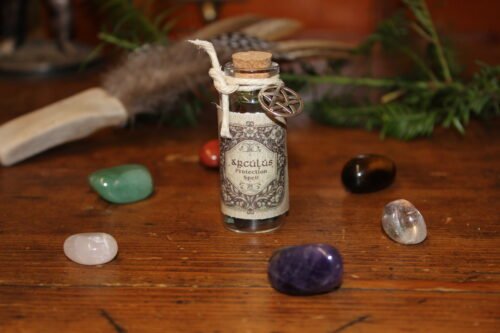
Gathering foxgloves at dawn
The Witchy and Spiritual Uses of Foxglove
Introduction
There are many witchy and spiritual uses of Foxglove (Digitalis purpurea) a strikingly beautiful plant known for its bell-shaped flowers and potent medicinal properties. Beyond its pharmaceutical applications, foxglove has held a significant place in folklore, spirituality, and witchcraft across various cultures. This article delves into the historical, medicinal, and cultural significance of foxglove, exploring its diverse uses and the legends that surround it.
Historical Uses and Folklore
Foxglove has long been associated with magic and folklore. The plant’s common name is believed to derive from “folk’s gloves,” referring to the gloves of fairy folk, or from the old English “foxes glofa,” meaning fox’s glove, suggesting that fairies gave these flowers to foxes to help them evade hunters. In Celtic mythology, foxglove was considered a plant of the fairies, and it was believed that the flowers bent over to form the shape of a glove due to the fairies’ touch.

A fox eyes up the foxgloves by moonlight
In medieval Europe, foxglove was often used in various magical practices. It was thought to offer protection against evil spirits and was sometimes planted around homes to ward off malevolent forces. According to folklore, hanging foxglove over doorways could protect inhabitants from witchcraft and bad luck. Additionally, healers used foxglove in amulets and charms, believing in its power to enhance intuition and psychic abilities.
Medicinal Uses: Historical and Modern
Historically, foxglove has been both a revered and feared plant in medicine. Its leaves contain potent cardiac glycosides, such as digitoxin and digoxin, which can have powerful effects on the heart. In the 18th century, English physician William Withering popularized the use of foxglove extract for treating heart conditions, a practice that laid the groundwork for modern cardiac medicine.
Modern medicine continues to utilize foxglove-derived compounds in the treatment of heart failure and atrial fibrillation. The precise dosage is crucial, as the plant’s compounds can be toxic if misused. According to a study published in the “Journal of Ethnopharmacology,” the therapeutic window of Digitalis is narrow, making it essential to administer it under strict medical supervision.
Cultural Significance and Uses
Different cultures have imbued foxglove with unique spiritual and symbolic meanings. In Norse mythology, foxglove was associated with the goddess Freya, symbolizing love and fertility. It was believed that foxglove could be used in love potions and rituals to attract romance and passion.
In witchcraft and Wiccan traditions, foxglove is often used in spells related to protection, divination, and communication with spirits. Witches might incorporate foxglove into their practices by creating herbal sachets, teas (with extreme caution due to its toxicity), or using it in ritual baths. It is also used as an offering to deities and spirits during rituals and ceremonies.
In the language of flowers, foxglove represents both insincerity and a wish for health, reflecting its dual nature as both a healer and a potential poison. This duality makes it a powerful symbol in magical practices, embodying the balance between life and death, healing and harm.

A modern wiccan preparing Foxglove
Modern Witchcraft and Spirituality
In contemporary witchcraft, foxglove continues to be valued for its mystical properties. Practitioners might use foxglove to enhance their psychic abilities and intuition, often placing the dried flowers on altars or using them in incense blends. The plant is also employed in rituals to honour the earth and its spirits, recognizing its deep connection to the natural world.
However, modern witches are mindful of the plant’s toxicity. As noted in “The Green Witch: Your Complete Guide to the Natural Magic of Herbs, Flowers, Essential Oils, and More” by Arin Murphy-Hiscock, it is essential to handle foxglove with care, wearing gloves when harvesting and avoiding ingestion or skin contact with its toxic parts .
Conclusion
Foxglove’s captivating beauty and potent properties have made it a significant plant in various domains, from medicine to magic. Its historical and cultural significance highlights the intricate relationship between humans and nature, where plants are revered not only for their practical uses but also for their mystical attributes. Whether used in healing hearts or warding off spirits, foxglove remains a powerful symbol of the dualities of life.
References
- “Journal of Ethnopharmacology.” Study on the Therapeutic Use and Toxicity of Digitalis. Available here
- Murphy-Hiscock, Arin. The Green Witch: Your Complete Guide to the Natural Magic of Herbs, Flowers, Essential Oils, and More. 2017.









